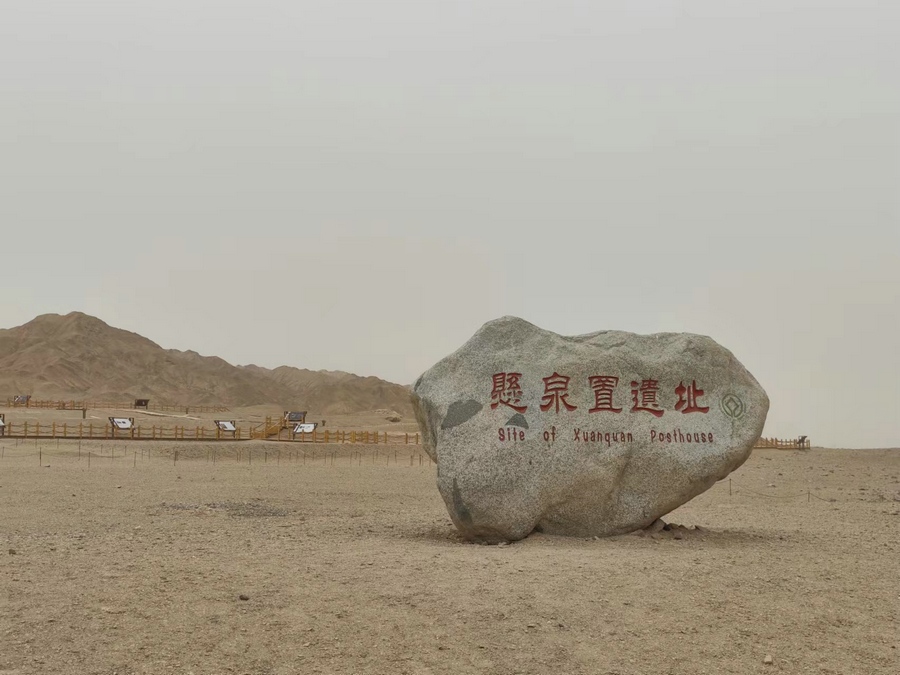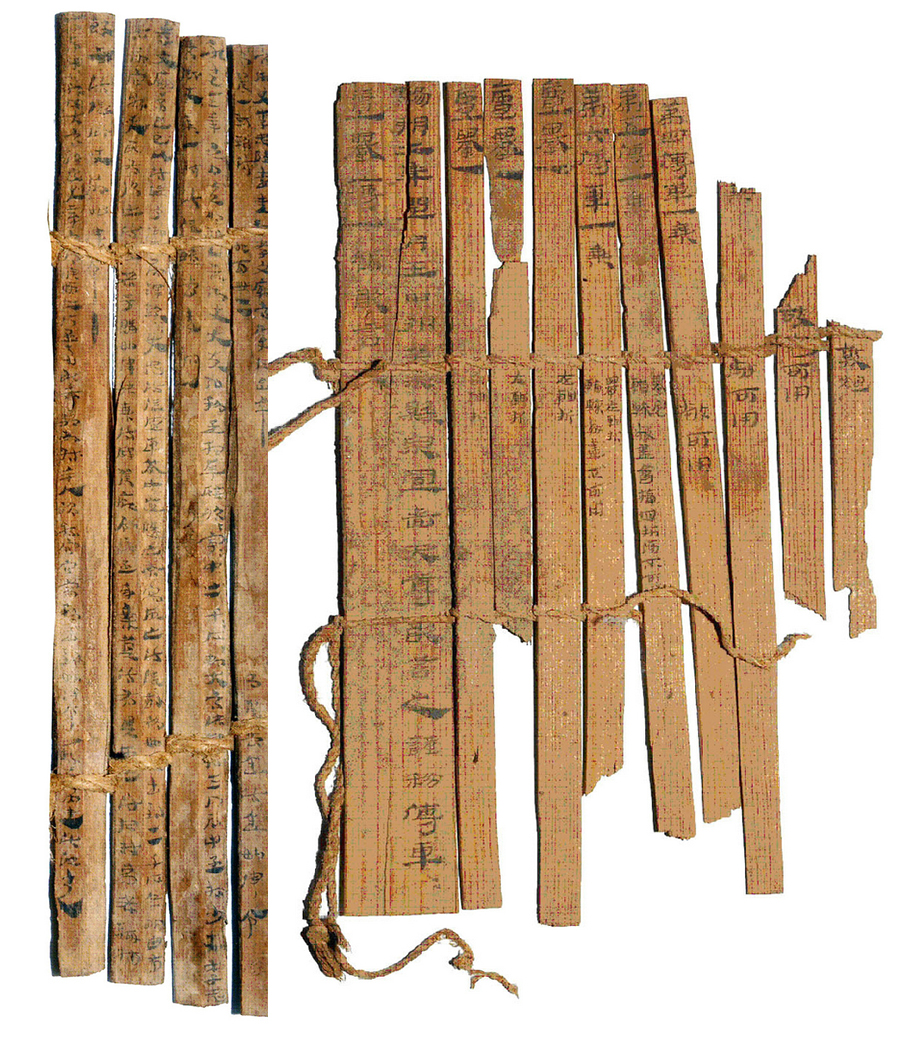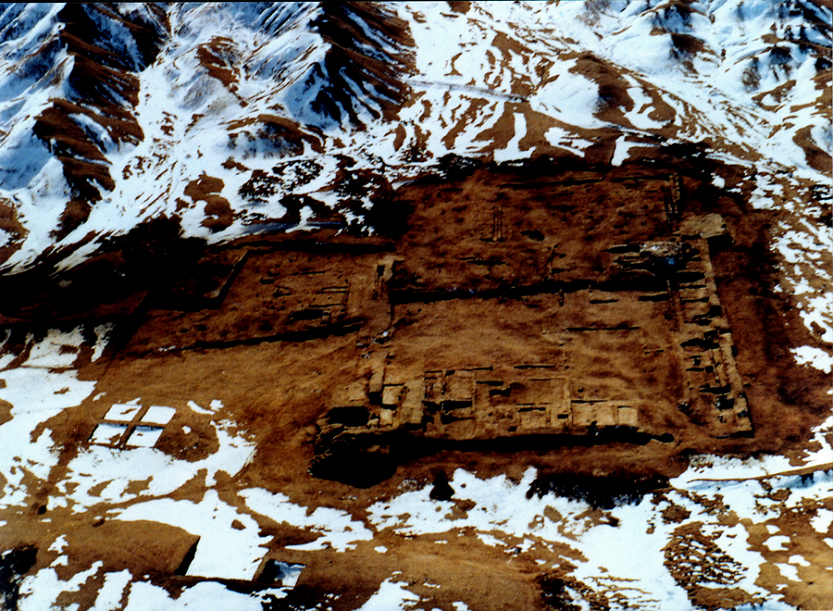



A view of the Site of Xuanquanzhi in Dunhuang city, Northwest China’s Gansu province, on July 30, 2023 [Photo by Yang Xiaoyu/chinadaiy.com.cn]
On an overcast, windy morning in late July, standing in the arid Gobi Desert of Dunhuang city, Northwest China’s Gansu province, was a test in its own right; the air was dry and hot. What greeted the eye was nothing but an endless wavy terrain formed by sand and rocks.
Battered by its cruel climate, one had to stretch their imagination to think of Xuanquanzhi, a post house that functioned here more than 2,000 years ago.
What was more surprising was that amid all the barrenness, the official institute once hosted up to 1,074 guests when the King of the Yutian Kingdom, heading a delegation from what is now the Hetian county in Xinjiang Uygur autonomous region, was en route to Chang’an, today’s Xi’an, to pay tribute to Emperor Xuan (91-48 BC) of the Western Han Dynasty (206 BC-AD 24). The delegation consumed large quantities of beef and mutton, and broke over 300 cups during their stay.
“The cost and details of this reception were all recorded on jiandu, bamboo or wooden slips used for writing documents before paper was widely available, which were unearthed from the Site of Xuanquanzhi,” Rong Hongmei, public education director at the Dunhuang Museum, told the China Daily website.

The jiandu unearthed from the Xuanquanzhi Ruins [Photo/Courtesy of the Xuanquanzhi Cultural Relics Management Office]
“Another high-profile itemized bill on jiandu unearthed from the site was about the post house receiving veteran diplomat Chang Hui in 65 BC when he was sent to visit Wusun Kingdom in what is now Xinjiang’s Yili Valley,” Rong added.
First discovered by the local cultural relics survey team in 1987, the Site of Xuanquanzhi was excavated between 1990 and 1992 by the Gansu Provincial Institute of Cultural Relics and Archaeology. More than 70,000 relics, including jiandu, silk books, paper documents, crops, farming tools and domestic animal bones, were unearthed from the site, making it one of the top 10 archeological discoveries in 1991.
In 2001, the site was made a national key cultural relics protection unit by the State Council. In 2014, it was included on UNESCO’s World Heritage List, as one of the 33 components of “Silk Roads: The Routes Network of Chang’an-Tianshan Corridor”, a transnational property of China, Kazakhstan and Kyrgyzstan.

This photo taken from a helicopter in the early 1990s shows an aerial view of the excavated Xuanquanzhi Ruins. [Photo/Courtesy of the Xuanquanzhi Cultural Relics Management Office]